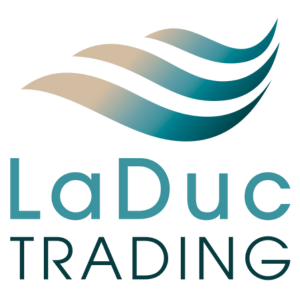LaDucTrading Macro Advisor, Craig Shapiro’s most recent client posts:
1. How does the SPX/NQ bubble pop?
Published 13 March 2024
Risk assets are starting to make some Fed members feel uncomfortable with their easing expectations but this won’t stop going until the Fed actually changes course.
In my view, we are going to need to see the elimination of the market’s expectations of an aggressive easing cycle this year in order to pop the equity bubble.
We will need to see yields move higher as the Fed abandons the idea of real rate normalization cuts because financial conditions have eased too aggressively over the last four months, which has led to a bottoming of inflation, forcing a recognition by the Fed that achieving the last mile toward 2% inflation will be more difficult. They will need to stay higher for longer and increase the odds that their next move could actually be a hike or a cut.
The recent inflation data has shown that inflation likely bottomed in the middle of the fourth quarter of 2023. Since then, we have see continuous m-o-m rises in supercore (services ex housing) inflation readings which were up another 47bps sequentially in February (near 5% annualized), very strong ISM services prices paid indicators, nearly 60% of the data points in the last PCE reading showing 5-10% price rises and a steady rise in inflation breakeven yields, as risk markets rallying has led to wealth effect gains. While oil has remained under wraps, gasoline prices have been steadily easing all year which if continued will further pressure headline inflation higher. That would be the nail in the coffin for the Fed’s desire to cut. In the words of Jimmy McMillan: “The inflation readings are just too damn high.”
Various Fed members have already expressed some concerns that easing financial conditions (which are now as loose as they’ve been since the start of the easing cycle according to the GS and Chicago Fed Financial Conditions indicators) is self-defeating toward achieving the 2% inflation target and that the economy to start the year doesn’t need more accommodation. I have referred to these voting members as the “Killer Bs”: Bowman, Barkin and Bostic, all of whom are nowhere near embracing a rate cutting regime starting at this point. Waller gave a speech a couple weeks ago entitled “What’s the Rush” which suggests his more hawkish biases as well.
In my view, Powell is not going to start cutting rates with any dissenting votes. He is going to want unanimous approval for a cut otherwise the cut will look political and he will look like Arthur Burns 2.0. Given this bias, and the difficulty at this point to move these four voters, we should be pricing in an increased likelihood of no rate cuts this year.
If the Fed removes some of the cuts at next week’s meeting (only two Fed members need to shift dots higher from 3 to 2 to move the median dot up), interest rate volatility would move higher, which is a precursor for overall equity volatility moving higher. There has been a tremendous chase for upside calls already as most investor groups (retail, CTAs, vol control funds, etc) are operating very close to max long positioning but still have FOMO given the moves in big tech. As equity volatility rallies further, we would start to get the systematic flow selling that could exacerbate a move to the downside, particularly once we are on the other side of March option expiry (Friday regular, next Wed VIX), as the start of a down move would push dealers back intk a negative gamma regime where selling begets more selling
While anything is possible, and we need to trade the Fed we have not the Fed we want, this is the framework I would use to see if it’s all going to start to unravel. At this point, I expect the Fed meeting next week to be hawkish, delaying the start of cutting cycle by shifting the dot plot higher for 2024 and 2025. However, if on the other hand, the Fed doesn’t flinch at the data it has seen to start the year and they still feel comfortable with cuts in the second quarter, we are going to keep blowing off even further until inflation expectations truly become unanchored and the Fed then really gets uncomfortable as inflation will increasingly be back and become an election issue this year.
My asset allocation biases have been long gold/bitcoin, short small cap equities and short USTs.
2. CPI – Too Hot to Cut
Published 12 March 2024
Recent data keeps making it harder for the Fed to kick off the loosening cycle they desire. They are fighting the economy but for how long.
Another stronger than needed inflation print should continue to give the Fed pause that they are going to achieve the last mile of bringing inflation back down to 2% after they have so foolishly allowed financial conditions to ease over the past 4+ months, a self-defeating measure that has only made their job more difficult.
Labor market isn’t slowing rapidly enough here to warrant attention while inflation has been re-accelerating for the last 4+ months. Supercore inflation up 47bps mom is annualizing levels far higher than the Fed can be comfortable with.
It only takes two members to move their dots from 3 cuts to 2 cuts to bring the median dot up for 2024. That seems like a layup now as I expect we will see a continued shift higher in the dot plot for both 2024 and 2025 next week with the possibility of higher neutral rate assumptions as well.
The Fed is being forced to push out the timeline toward providing more liquidity in this stagflation environment. If they agree, then risk assets will finally start to take a hit. If they fail to agree, and continue to believe they can ease this year, risk asset markets will continue to rally until inflation expectations and actual inflation rise enough to make them uncomfortable enough not to ease. The choice is theirs next week.
===================================
For Pro-to-Pro engagement and support, start your EDGE membership today.
About the author:

Craig Shapiro, Macro Advisor
Craig is a long/short cross-asset portfolio manager whose investment process combines bottoms up industry and company fundamental analysis with a top down macro framework. His research process, portfolio construction and risk management frameworks, designed to generate consistent. absolute and relative risk-adjusted returns independent of market environment, were established while managing capital at Point 72 Asset Management. Ospraie Management. Graticule Asia Macro Advisors and Circle Lane Capital. His strategy invests across all major asset classes including equities/etfs/indices, commodities, fixed income, FX and crypto.
